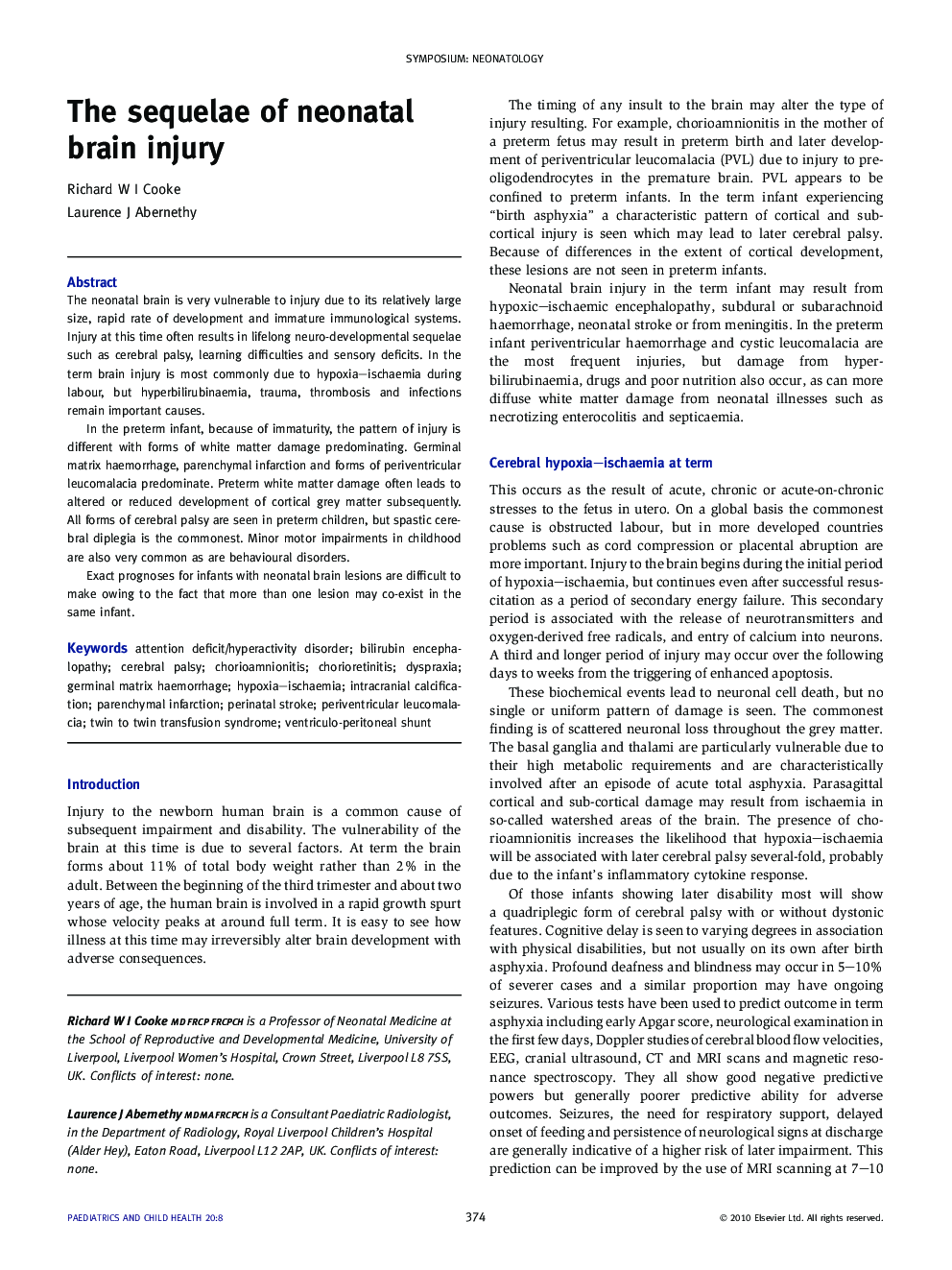| Article ID | Journal | Published Year | Pages | File Type |
|---|---|---|---|---|
| 4172998 | Paediatrics and Child Health | 2010 | 8 Pages |
The neonatal brain is very vulnerable to injury due to its relatively large size, rapid rate of development and immature immunological systems. Injury at this time often results in lifelong neuro-developmental sequelae such as cerebral palsy, learning difficulties and sensory deficits. In the term brain injury is most commonly due to hypoxia–ischaemia during labour, but hyperbilirubinaemia, trauma, thrombosis and infections remain important causes.In the preterm infant, because of immaturity, the pattern of injury is different with forms of white matter damage predominating. Germinal matrix haemorrhage, parenchymal infarction and forms of periventricular leucomalacia predominate. Preterm white matter damage often leads to altered or reduced development of cortical grey matter subsequently. All forms of cerebral palsy are seen in preterm children, but spastic cerebral diplegia is the commonest. Minor motor impairments in childhood are also very common as are behavioural disorders.Exact prognoses for infants with neonatal brain lesions are difficult to make owing to the fact that more than one lesion may co-exist in the same infant.
